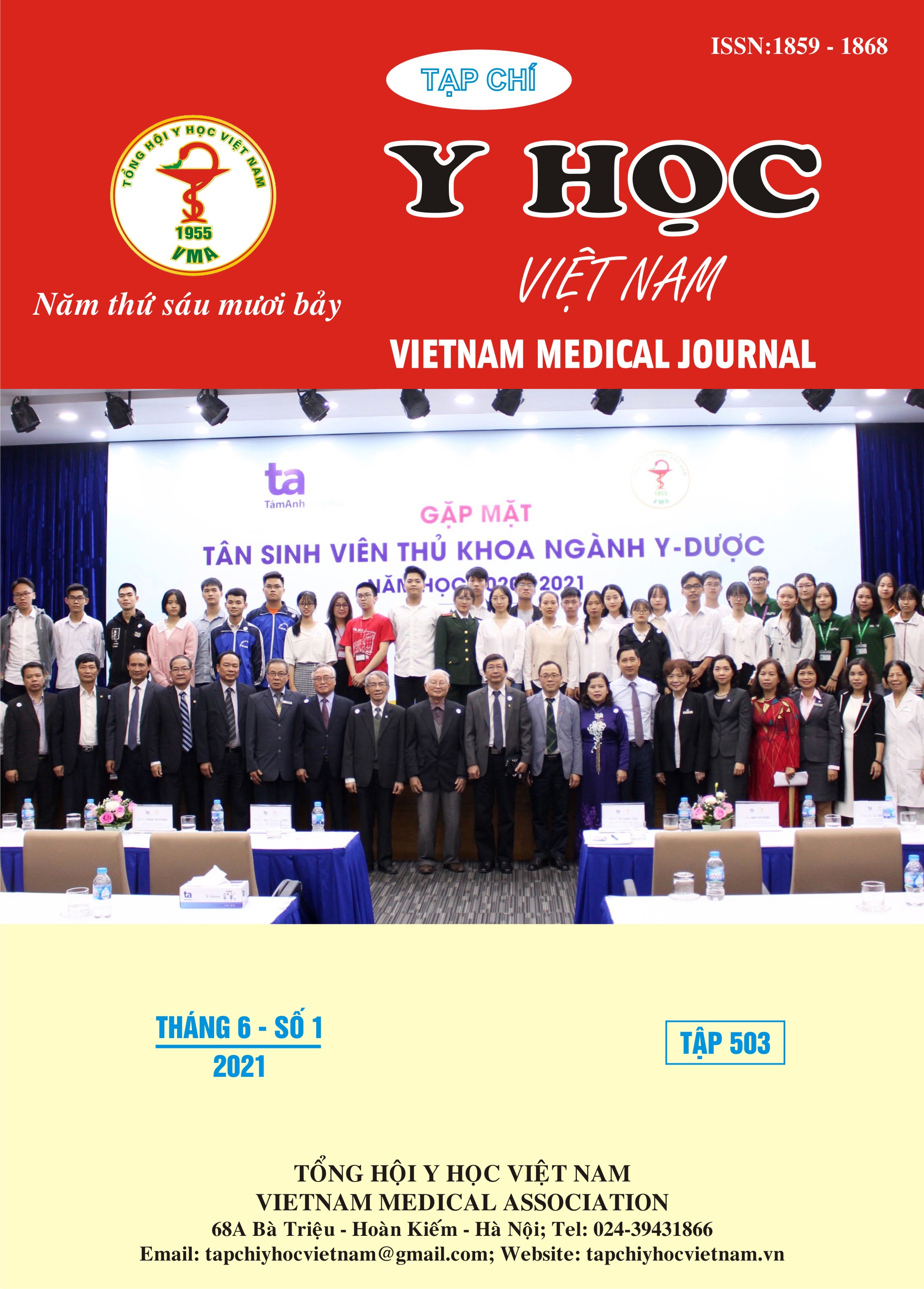KNOWLEDGE AND ATTITUDES RELATED TO COLORECTAL CANCER SCREENING OF PEOPLE AGED 50-75 YEARS IN HOAN KIEM DISTRICT, HANOI, 2019
Main Article Content
Abstract
Objective: To describe knowledge, attitudes and perceptions about barriers to colorectal cancer screening of people aged 50-75 years in Hoan Kiem district, Hanoi, 2019.Method: Cross-sectional survey conducted on 402 patients aged 50-75 years old who went to the outpatient clinics of Hoan Kiem District Medical Center from January to March 2019. Results and conclusion: Knowledge and attitudes ("don't think I have cancer" or "lack of information of screening ", "don't know about the screening techniques " or "only seek treatment when there is a sign of cancer) ") is the most common factor (43.7%) among the perceived barriers to out of pocket payment to FOBT. The most commom barrier to pay for colonoscopy involve "fear of finding out the disease", "fear of going to the hospital", "fear of anesthesia", "giving the device into the body causing discomfort" or "fear of pain" (34.8%).
Article Details
Keywords
knowledge, attitude, percieved barriers, colonoscopy, colorectal cancer screening
References
2. Nguyễn Thu Hà and Nguyễn Quỳnh Anh, Báo cáo đề tài cấp cơ sở: Đánh giá mức sẵn sàng chi trả đối với một số can thiệp phát hiện sớm ung thư tại Việt Nam - Nghiên cứu trường hợp đối với Ung thư đại trực tràng. 2020, Trường Đại học Y tế Công cộng: Hà Nội, Việt Nam.
3. Brouse, C.H., et al., Barriers to colorectal cancer screening with fecal occult blood testing in a predominantly minority urban population: a qualitative study. American journal of public health, 2003. 93(8): p. 1268-1271.
4. Javadzade, S.H., et al., Barriers related to fecal occult blood test for colorectal cancer screening in moderate risk individuals. Journal of education and health promotion, 2014. 3.
5. Jones, R.M., et al., Patient-reported barriers to colorectal cancer screening: a mixed-methods analysis. American journal of preventive medicine, 2010. 38(5): p. 508-516.


